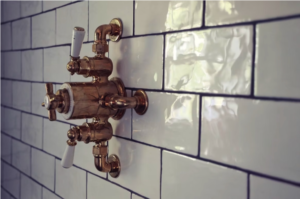
When designing or renovating a home, one of the biggest challenges homeowners and architects face is plumbing. Traditional plumbing systems depend heavily on gravity drainage, which limits where you can position kitchens, bathrooms, or laundry areas. This often forces people to compromise on their dream layouts, spending extra time and money on structural adjustments, or worse, giving up on certain design ideas altogether.
But modern living demands more flexibility. Whether it’s converting a basement into a guest suite, adding a compact bathroom in the attic, or building a stylish open-concept kitchen in a non-traditional location, the need for versatile plumbing solutions has never been greater. This is where lifting stations emerge as a game-changing innovation.
Breaking Free from Traditional Plumbing Constraints
Conventional drainage systems require sloping pipelines to carry wastewater to the main sewage line. If the desired location is far from existing drains, below ground level, or in a spot with no downward slope, gravity plumbing simply won’t work without costly excavation.
A lifting station bypasses this limitation by using powerful pumps to move wastewater (grey or black water) from toilets, sinks, showers, dishwashers, or washing machines to the nearest sewage connection. This mechanical pumping capability frees homeowners and designers from the rigid rules of gravity, making plumbing far more adaptable.
Design Freedom for Homeowners
For homeowners, lifting stations can transform what’s possible within a property:
- Create bathrooms anywhere: Add an ensuite in the attic, basement, or garage with compact bathroom pump solutions.
- Expand kitchens: Move your kitchen to face the garden or integrate it into an open-plan living space.
- Add laundry rooms: Set up a utility area wherever it’s most convenient, even in spaces far from traditional drains.
- Increase property value: Additional bathrooms or kitchens not only improve functionality but also enhance resale value.
These benefits mean that you no longer need to plan your dream home around the plumbing. Instead, plumbing adapts to your lifestyle.
A Game-Changer for Architects and Interior Designers
For professionals, lifting stations are more than just a workaround, they’re an enabler of creativity. Architects and interior designers often have bold ideas but are constrained by the technicalities of plumbing systems.
By integrating lifting stations into their designs, professionals can:
- Achieve greater layout flexibility, placing kitchens and bathrooms in optimal spots for functionality and aesthetics.
- Deliver luxury and comfort by enabling spa-like bathrooms, modern kitchen islands, or compact powder rooms in unconventional locations.
- Maximize urban living spaces, where every square foot matters, by converting underutilized corners into functional rooms.
This freedom translates into designs that are more innovative, sustainable, and client-focused.
Easy Installation with Modern Technology
Unlike traditional methods that involve extensive demolition and re-piping, installing a lifting station is simple, cost-effective, and minimally disruptive. Compact in size, modern units can be tucked away discreetly in cabinets, behind walls, or beneath sinks without altering the aesthetic of the room.
They also come with features like:
- Dual-motor reliability for continuous performance
- High-temperature resistance for kitchen use
- Noise-reduction technology for quiet operation
- Low maintenance needs, ensuring peace of mind
This makes them an attractive choice for both new builds and renovations.
Sustainability and Cost Efficiency
Another advantage of lifting stations is their contribution to sustainability. By eliminating the need for large-scale construction, excavation, or rerouting of sewage lines, they:
- Lower renovation costs significantly
- Reduce waste materials during construction
- Cut down installation time, minimizing disruption to daily life
Additionally, efficient water management ensures that grey and black water is disposed of properly, supporting hygienic and eco-friendly living environments.
Real-Life Scenarios
- A family in Mumbai wanted to convert their basement into a home theatre with a guest washroom. Instead of digging up floors, they installed a compact lifting station, saving time and money.
- An architect in Delhi used lifting stations to design luxury apartments with bathrooms in unconventional corners, maximizing usable space without breaking plumbing rules.
- A homeowner in Bangalore relocated their kitchen to the back of the house facing the garden, achieving their dream open-space layout, all thanks to a kitchen lifting station.
Conclusion
Smart homes need smart plumbing, and lifting stations are the perfect solution. By breaking the limitations of traditional gravity drainage, they empower homeowners to design freely and architects to innovate without restrictions.
Whether it’s a modern kitchen in an unexpected spot, a compact attic bathroom, or a functional laundry room in the basement, lifting stations bring flexibility, convenience, and sustainability into home design.
With this technology, your dream home is no longer defined by plumbing constraints, it’s defined by your imagination.


